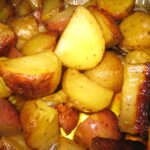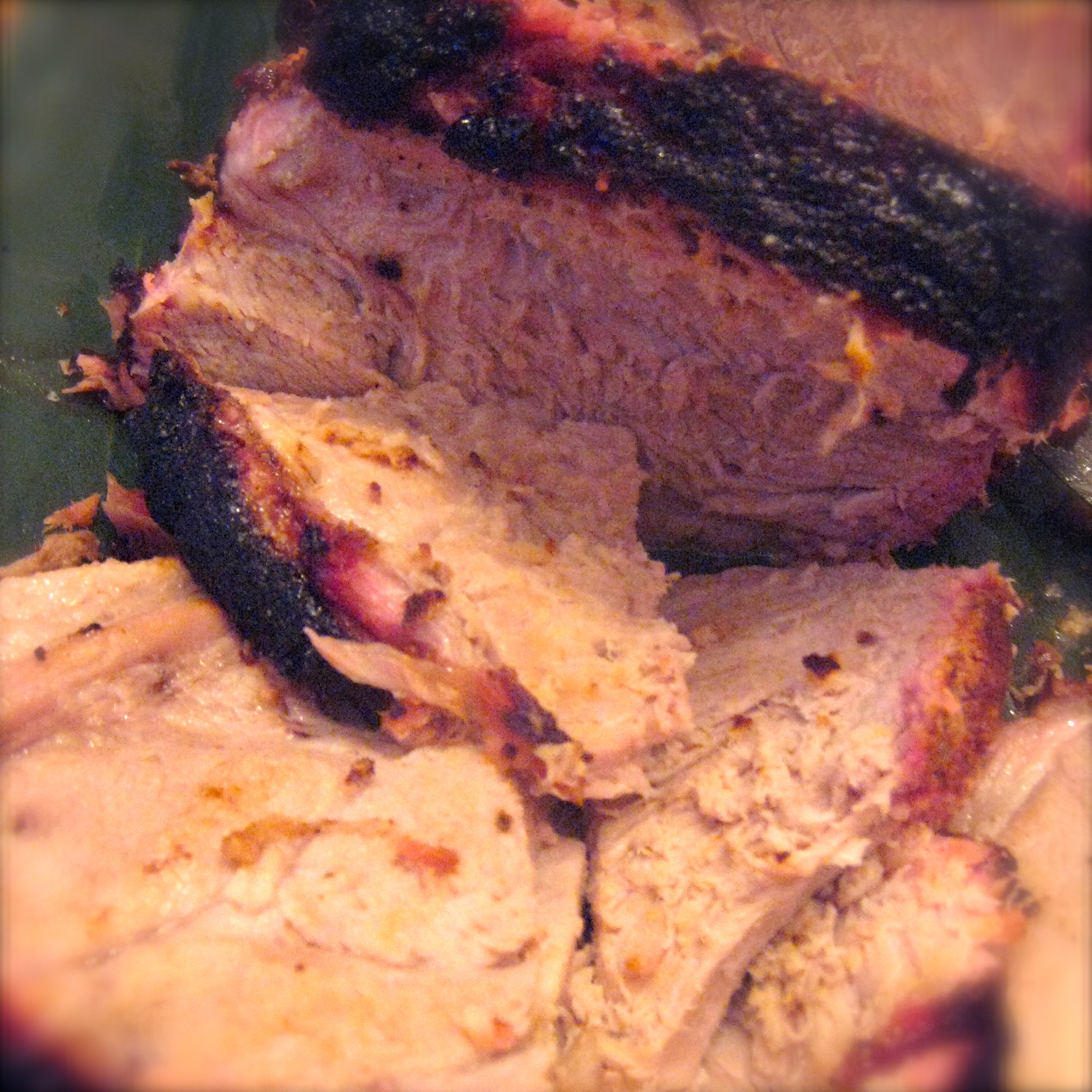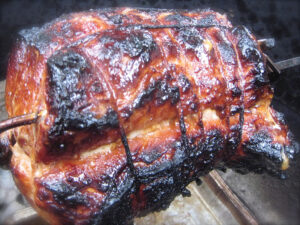Yesterday for Sunday Dinner I cooked on the Weber Kettle rotisserie for the first time this year. I didn’t allow for the cooler ambient temperature, so I had to move the chicken and drip pan potatoes over to the Genesis gas grill for about ten minutes at the end to finish them, but everything turned out great.
We especially enjoyed the appetizer: some mini peppers stuffed with cream cheese, herbs de provence and shredded parm that I grilled for a few minutes on the Genesis, using a pepper rack.
We had a bottle of Charles Smith Columbia Valley Chardonnay with the peppers, and a Chilean Chardonnay with the meal. Claudia made crescent rolls and her famous Wulff Salad, and also served corn with the chicken and potatoes. It was cherry pie for dessert.
This rotisserie chicken with drip pan potatoes is one of our favorite meals. I was happy that even though I ran into difficulty because of the weather, I knew how to recover and turn out a decent plate.






 My wife brought home a six pound pork roast on Saturday, and we hadn’t planned Sunday Dinner yet, so I decided to roast it on the rotisserie. I adapted the recipe from the Weber iPad App for Rotisserie Pork Roast with Bourbon Mop. As it turns out, I ended up using some leftover apple juice and vinegar for the mopping, but I did use something akin to the rub from the recipe, and it made a beautiful crust.
My wife brought home a six pound pork roast on Saturday, and we hadn’t planned Sunday Dinner yet, so I decided to roast it on the rotisserie. I adapted the recipe from the Weber iPad App for Rotisserie Pork Roast with Bourbon Mop. As it turns out, I ended up using some leftover apple juice and vinegar for the mopping, but I did use something akin to the rub from the recipe, and it made a beautiful crust.



